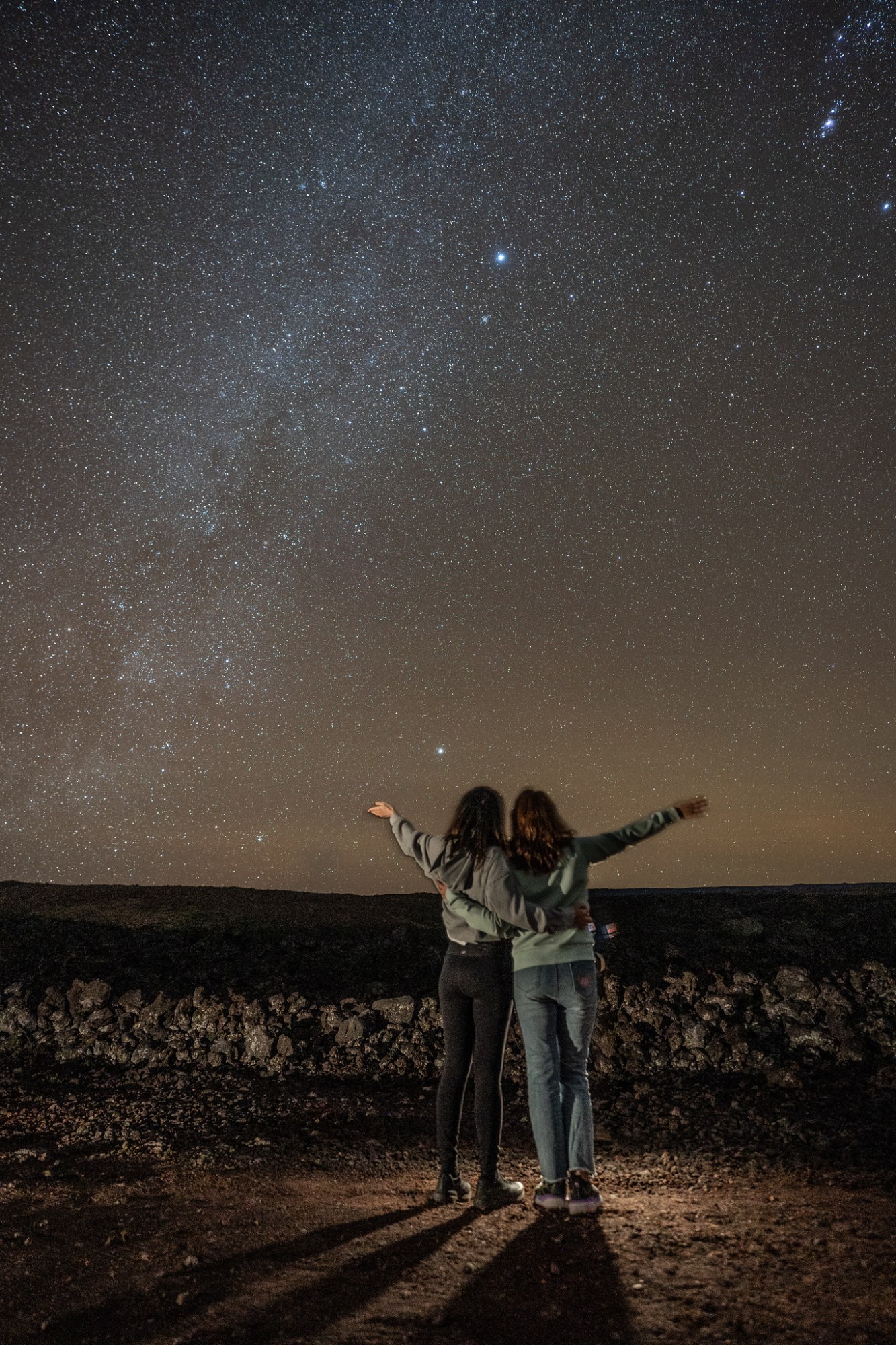February 2025: What’s in Hawaii’s Night Sky?

Ah, the Hawaiian night sky in February 2025—a cosmic masterpiece painted with planets, stars, and celestial events! Given Hawaii’s position near the equator and its dark-sky locations, you’ll have an excellent vantage point for some of the universe’s best offerings. Here are the top things to see:
1. Planetary Parade – February 28
A rare seven-planet alignment will be visible in the early morning hours. Look toward the eastern horizon before sunrise to spot:
• Venus & Mercury: Low on the horizon, just before dawn.
• Mars & Jupiter: Bright and higher up, easily visible to the naked eye.
• Saturn: A golden beacon in the sky.
• Uranus & Neptune: Visible with binoculars or a telescope.
This is a rare event that won’t happen again for years, so don’t miss it!
2. The Winter Circle (Winter Hexagon)
Dominating the evening sky, this asterism consists of six of the brightest stars in the sky:
• Sirius (Canis Major) – The brightest star visible from Earth.
• Procyon (Canis Minor)
• Pollux (Gemini)
• Capella (Auriga)
• Aldebaran (Taurus)
• Rigel (Orion)
This celestial hexagon is a spectacular sight and a great way to navigate the winter sky.
3. Orion’s Belt and the Orion Nebula (M42)
Orion, the Hunter, is a centerpiece of the February night sky. Below his famous belt of three bright stars lies the Orion Nebula (M42), one of the most stunning deep-sky objects visible to the naked eye.
4. The Pleiades (M45) – The Seven Sisters
High overhead in February, this dazzling open star cluster in Taurus looks like a miniature dipper. It’s a favorite among Hawaiian stargazers, appearing as a fuzzy patch to the naked eye and revealing stunning blue stars through binoculars.
5. The Beehive Cluster (M44) – An Open Cluster in Cancer
Also known as Praesepe, this star cluster in the constellation Cancer is visible to the naked eye as a hazy patch and comes alive in binoculars.
6. The Moon’s Phases
• Full Moon – February 13: A great time for moonlit hikes but not ideal for deep-sky observing. Our tours are not offered.
• New Moon – February 27: The best time for dark-sky stargazing and astrophotography.
7. Zodiacal Light – A Ghostly Glow
Look to the western horizon after sunset on moonless nights. The Zodiacal Light, caused by sunlight scattering off interplanetary dust, appears as a faint, cone-shaped glow. Hawaii’s clear skies make this phenomenon especially visible.
8. Epic Tours – Mauna Kea Stargazing Events
For an unparalleled experience, visit Mauna Kea—one of the best stargazing locations on Earth. Our stargazing tours offer an incredible view of the cosmos. Tours are scheduled to avoid bright moon phases, ensuring optimal viewing conditions. Our calendar is always updated with the best available dates.
Book on our website and prepare for an unforgettable celestial journey in Hawaii’s February 2025 sky!


